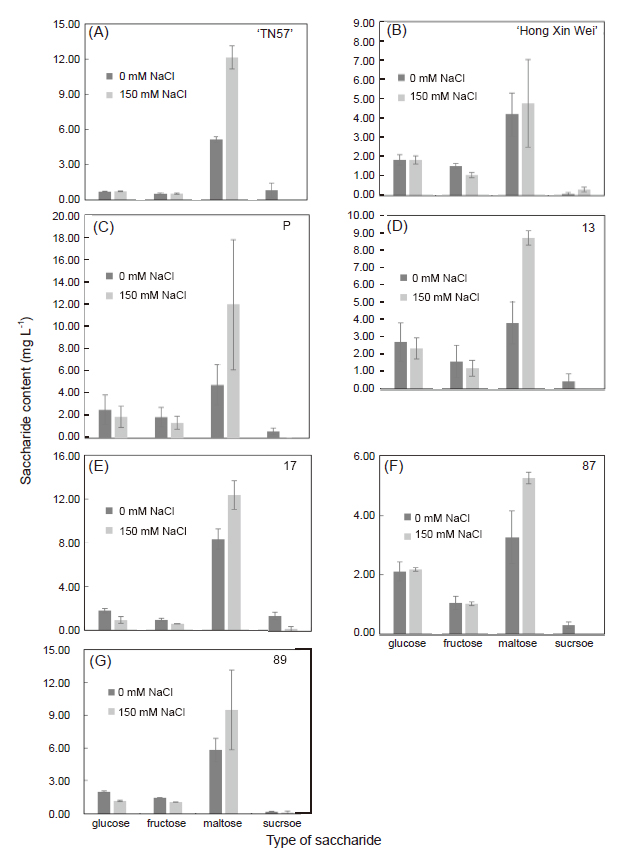All issues

Author:Po-Hsien Lu*, Ting-Zhu Zhan, and Yung-Chang Lai
Abstract:
In this study, the mutants (P, 13, 17, 87, 89), ‘TN57’ and ‘Hong Xin Wei’ of sweet potato (Ipomoea batatas) were used as experimental materials. The salt stress was conducted in three aspects: tissue culture, potted trial and field experiment. The physiological and phenotype responses of sweet potato under salt stress were analyzed to evaluate the salt tolerance of the mutants. The results showed that different mutants responded differently to salt stress, and their salt tolerance index (STI) varied with different traits and decreased with increasing salt concentrations. The seedlings of tissue culture for mutants performed stably at 0.5% and was significantly inhibited at 1.0% salt concentration. Among them, the root length of No. 13 and No. 89 of mutants performed best. In addition, the results of the potted experiment showed that the root weight of sweet potato was stable under 150 mM salt stress, and the STI of the mutagenic line, No. 87, was the highest. It was worth noting that under 150 mM salt stress, sweet potato accumulated large amounts of Na+ and maltose content in the roots, which might be the reason to explain why the mutants had strong salt tolerance. Further evaluation in the results of the field experiment showed that the salt stress had a slight negative impact on the shoots of sweet potato, but had larger negative effect on the roots, and it caused to the decreasing of yield for sweet potato. However, the degree of yield reduction varied with different genotypes. Among them, ‘Hong Xin Wei’, P and No. 87 were significantly higher. In the potted trial and the saline soil field experiment, the sweet potato mutant P and No. 87 could grow normally and had higher yields throughout the whole cultivation period. It indicated that the two lines had higher salt tolerance and could be used as the experimental materials of salt-tolerance in the breeding program of sweet potato.
Key words:Sweet potato, Salt tolerance, Mutant line
Download:![]() PDF Links
PDF Links
- 1. Using Digital Soil Mapping to Predict Soil Organic Carbon Stocks in Zhuoshui River Basin
- 2. Taxonomic Review of the Genus Asiophrida Medvedev, 1999 in Taiwan (Insecta: Coleoptera: Chrysomelidae: Galerucinae: Alticini), with Notes on Biology
- 3. Development of a Technique for Forecasting (or Pre-Detection) Anthracnose Disease Incidences of Green Mature Bagging Mango Fruits
 Submit your manuscript
Submit your manuscript
 Guide for authors
Guide for authors